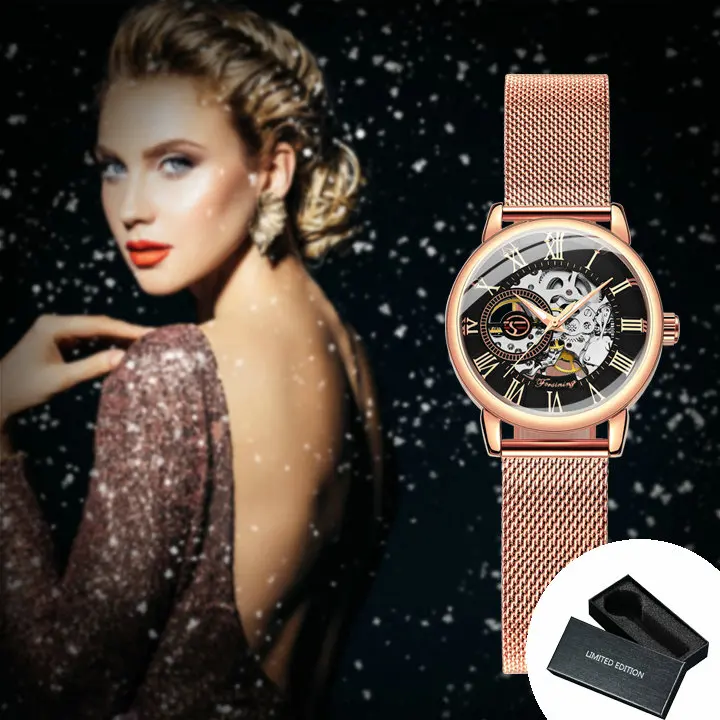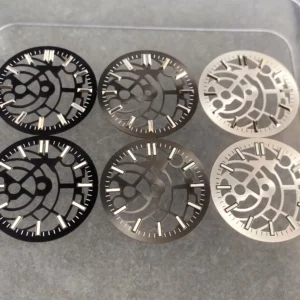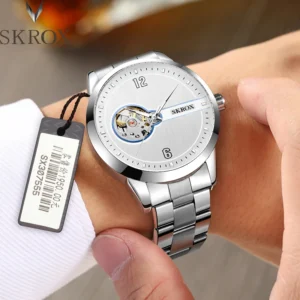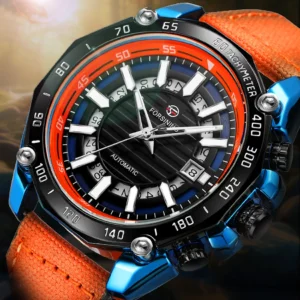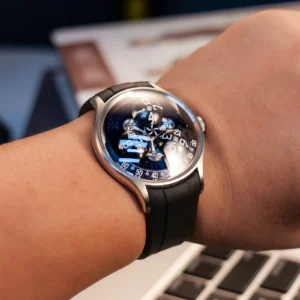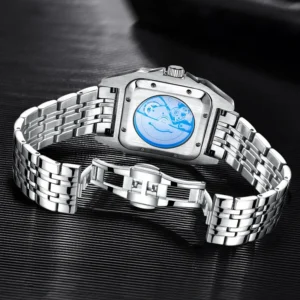Understanding Dial Transparency: The Basics of Mechanical Watch Aesthetics
The allure of mechanical watches extends beyond their timekeeping capabilities—it’s about the artistry hidden beneath the dial. Mechanical transparency in watchmaking refers to the deliberate exposure of a watch’s inner workings, allowing enthusiasts to appreciate the intricate dance of gears, springs, and wheels that power these miniature marvels.
This transparency trend has become increasingly popular among watch enthusiasts who value both technical craftsmanship and visual appeal. Two distinct approaches have emerged in this realm: skeleton watches and open heart designs. Each represents a different philosophy in watchmaking aesthetics.
Skeleton watches embody complete revelation—stripping away all non-essential material to expose nearly the entire movement. In contrast, open heart watches offer a selective glimpse, featuring a strategically placed aperture that reveals just the “beating heart” of the timepiece.
These different approaches to mechanical display emerged prominently in the mid-20th century, though their roots trace back to pocket watches from earlier eras. The tradition of displaying mechanical craftsmanship represents the pride watchmakers take in their work and their desire to share this artistry with the wearer.
| Feature | Skeleton Watch | Open Heart Watch |
|---|---|---|
| Exposure Level | Extensive (entire movement visible) | Selective (only balance wheel visible) |
| Visual Complexity | High (many components visible) | Moderate (focused on one area) |
| Dial Presence | Minimal or absent | Mostly intact |
| Time Reading Ease | Generally more challenging | Generally easier |
| Visual Impact | Bold and dramatic | Subtle and elegant |
The fundamental differences between these styles lay the groundwork for understanding how each might appeal to different aesthetic sensibilities and practical needs, as we’ll explore in the following sections.
The evolution of these transparent designs has been influenced by the broader history of dive watch engineering, showcasing how watchmaking traditions adapt while preserving their core appeal.
The Elegant Restraint: Open Heart Watch Design Explored
An open heart watch features a precisely cut aperture in the dial that reveals the balance wheel and escapement—the true “heart” of a mechanical timepiece. This opening typically appears as a circular or semi-circular window, strategically positioned to showcase the most visually dynamic part of the watch movement.
The balance wheel, often visible through this aperture, serves a crucial technical purpose. This component oscillates back and forth at a consistent rate (typically 28,800 vibrations per hour in modern watches), regulating the timekeeping accuracy of the watch. The escapement works alongside it, releasing energy from the mainspring in controlled increments.
Open heart designs typically position their apertures at specific locations on the dial:
- 6 o’clock position (most common)
- 12 o’clock position (less common)
- 9 o’clock position (seen in some designs)
What makes open heart watches particularly appealing is their balanced approach to mechanical visibility. They maintain the classic watch appearance while offering a window into the mechanical soul of the timepiece. This “selective revelation” philosophy embodies restraint and elegance, allowing the watch to function as both a practical timekeeper and a showcase of mechanical artistry.
Open heart watches commonly feature these design variations:
- Circular apertures with polished edges
- Teardrop-shaped openings that follow the natural curve of the balance wheel
- Irregular or artistic cutouts that complement the overall dial design
- Contrasting finishes around the aperture to draw attention to the mechanical display
The visible components in quality open heart watches often receive special finishing treatments, including circular graining, Geneva stripes, or polished bevels. These techniques enhance the visual appeal of the exposed mechanism, turning a functional component into an artistic focal point.
The captivating world of open heart watches offers countless design variations while maintaining this fundamental balance between revelation and restraint. For those intrigued by this elegant approach, exploring different open heart automatic watches reveals the creative diversity within this style.
Full Mechanical Display: Anatomy of Skeleton Watches
Skeleton watches represent the most dramatic expression of mechanical transparency in watchmaking. Unlike their open heart counterparts, skeleton timepieces undergo an extensive process where the movement plates and bridges are cut away—or “skeletonized”—to reveal as much of the inner mechanism as possible while maintaining structural integrity.
The skeletonization process involves painstaking craftsmanship and precision. Watchmakers must carefully remove excess metal from the movement components without compromising functionality. This delicate balance requires extensive expertise in both engineering and aesthetics.
Skeleton watches can be categorized into several types:
- Fully skeletonized designs where nearly all non-functional material is removed
- Partially skeletonized watches that maintain some solid elements for structural or aesthetic purposes
- Modern skeleton designs that incorporate contemporary materials and architectural approaches
- Traditional skeleton watches that showcase classical hand-finishing techniques
The extensive transparency in skeleton watches creates a uniquely immersive visual experience but introduces technical challenges. With more exposed components, these watches require exceptional dust protection and precise assembly to maintain reliable operation.
The remaining structural elements in skeleton watches typically include:
- Movement bridges (often redesigned for both strength and beauty)
- Gear train components that transmit power from the mainspring to the escapement
- Balance and escapement assembly (the regulating heart of the watch)
- Winding and setting mechanisms
- Mainspring barrel (the power source)
Each of these components becomes an integral part of the watch’s visual identity. Skilled watchmakers transform these functional elements into artistic expressions through specialized finishing techniques:
- Hand-filing and beveling of edges (anglage)
- Intricate engraving on remaining bridges and plates
- Mirror polishing of specific components
- Application of brushed or matte textures for contrast
- Black polishing (a technique that creates a mirror-like surface so perfect it appears black from certain angles)
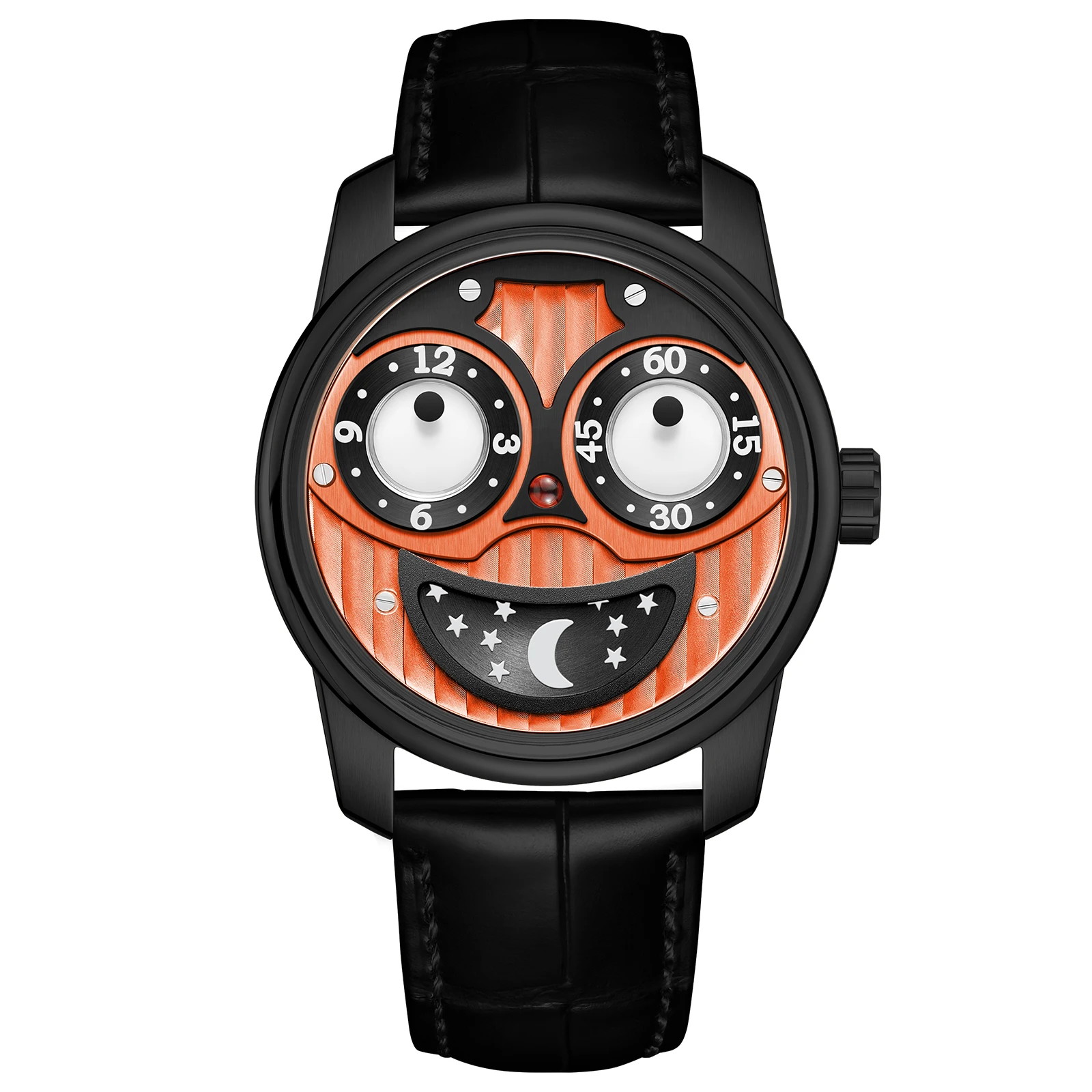
Understanding how skeleton watches expose movement helps appreciate the technical challenges and artistic possibilities of this style. The variety of approaches becomes evident when examining different skeleton watches that each interpret transparency through unique design languages.
Visual Drama vs. Subtle Revelation: The Aesthetic Contrast
When comparing skeleton and open heart watches side by side, the aesthetic contrast becomes immediately apparent. Each style creates a distinctly different visual impact and wrist presence, appealing to different sensibilities and occasions.
Skeleton watches command attention with their bold mechanical display. The extensive exposure of gears, springs, and bridges creates a complex visual landscape that draws the eye into its mechanical depths. This style transforms the watch from a mere timepiece into a mechanical sculpture, celebrating the raw beauty of watchmaking engineering.
In contrast, open heart watches strike a more reserved tone. By limiting transparency to a strategic aperture, they maintain the classic watch appearance while offering a glimpse into the movement’s beating heart. This approach creates a more balanced aesthetic that can transition seamlessly between formal and casual settings.
The way light interacts with these designs further emphasizes their differences. Skeleton watches create fascinating interplays of light and shadow as illumination passes through multiple layers of mechanical components. Open heart designs focus this light interaction on a single area, creating a more concentrated visual highlight against an otherwise conventional dial.
| Aesthetic Factor | Skeleton Watch | Open Heart Watch |
|---|---|---|
| Visual Complexity | High (many visible components) | Moderate (focused on balance wheel) |
| Readability | Often challenging due to transparent dial | Generally preserved with intact dial |
| Light Interaction | Complex shadows and reflections throughout | Focused reflection in aperture area |
| Perceived Size | Often appears larger and more substantial | Maintains traditional proportions |
| Wrist Presence | Bold, attention-grabbing | Subtle, refined |
| Overall Impression | Mechanical exhibition, technical focus | Traditional with mechanical accent |
The perceived size and presence of each style also differs significantly. Skeleton watches tend to wear larger on the wrist due to their visual complexity, even when the case dimensions are identical to their open heart counterparts. The busy visual nature of fully exposed movements creates a more commanding presence that stands out as a statement piece.
The engineering of perfect skeleton watches requires balancing these aesthetic considerations with practical wearability. For those drawn to this bold style, exploring automatic skeleton watches reveals how different brands interpret this mechanical transparency while maintaining their distinct design languages.
The Readability Factor: Balancing Art and Function
While the aesthetic appeal of transparent watch designs is undeniable, the primary function of any timepiece remains telling time. This presents different challenges for skeleton and open heart designs as they balance mechanical display with practical legibility.
Skeleton watches face the greater challenge in this regard. With minimal or no traditional dial present, designers must find creative solutions to ensure the hands remain visible against the busy mechanical backdrop. Common techniques include:
- High-contrast hands with luminous filling
- Elevated chapter rings that separate the time-telling elements from the movement
- Color-coded hands that stand out against the metallic movement
- Peripheral minute tracks that frame the skeletal display
- Strategic use of negative space to enhance readability
Open heart watches generally maintain better legibility by preserving most of the traditional dial. The aperture typically occupies only a small portion of the dial real estate, allowing for normal hour markers and hands. This approach naturally preserves readability while still offering mechanical visibility.
Hand design plays a crucial role in both styles. For skeleton watches, hands must be substantial enough to be easily visible against the complex background, often featuring bold shapes and strong contrasts. Open heart watches have more flexibility, allowing for both traditional and more decorative hand styles that complement the overall design language.
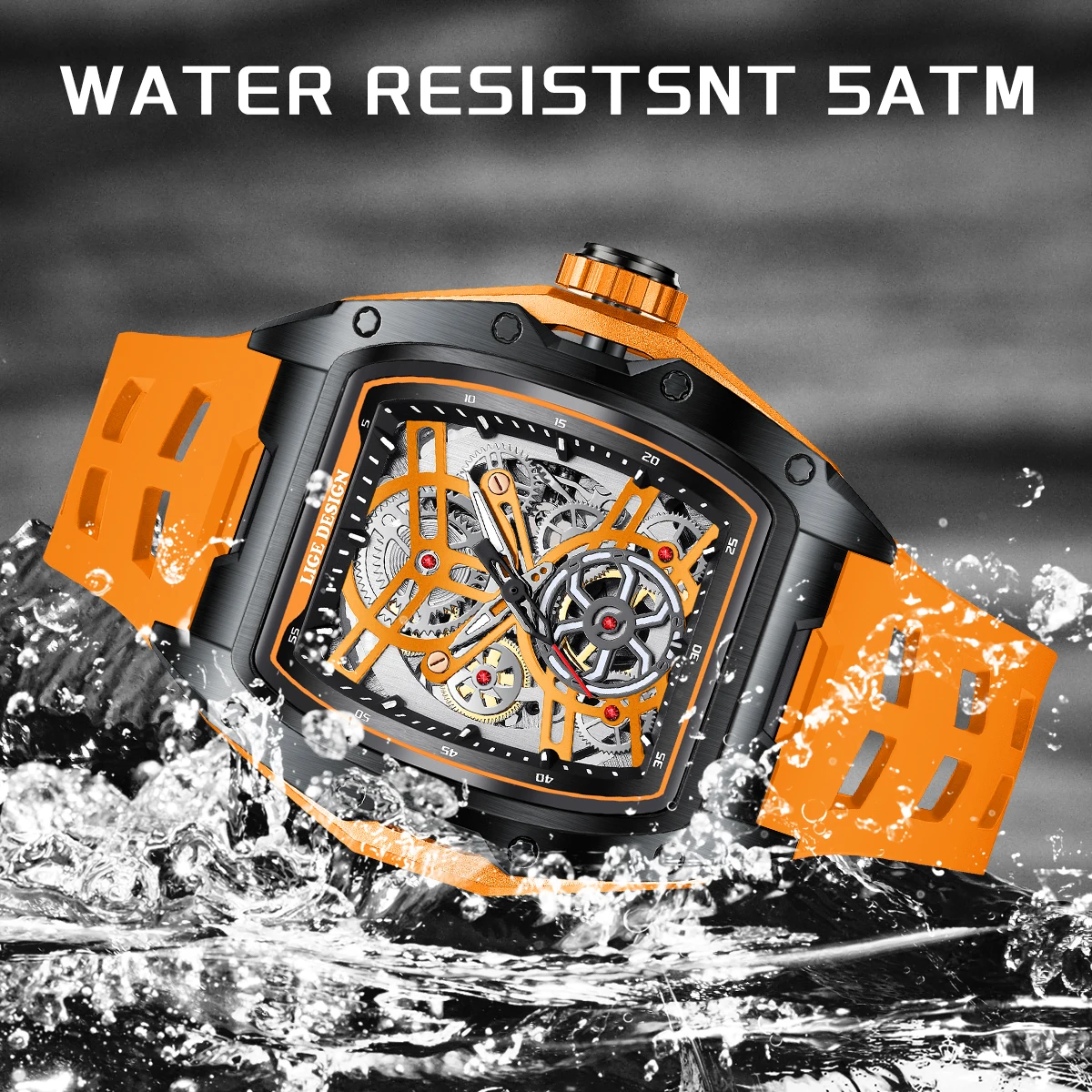
The balance between artistic expression and functional legibility represents one of the key differentiators when comparing skeletonized vs. partially open dials. This consideration often influences which style better suits different practical needs and aesthetic preferences.
Craftsmanship Showcase: Finishing Techniques in Transparent Designs
The visual appeal of both skeleton and open heart watches depends heavily on the quality of finishing applied to their visible components. These finishing techniques transform raw mechanical parts into objects of beauty, elevating a watch from merely functional to truly artistic.
Skeleton watches demand particularly extensive finishing due to their greater exposure. With nearly every component visible, watchmakers must apply meticulous decoration throughout the movement. This comprehensive approach creates a consistent visual experience regardless of which part of the movement catches the eye.
Open heart watches focus their finishing efforts on the components visible through the aperture, particularly the balance wheel and surrounding areas. This concentrated approach allows watchmakers to create a striking focal point without the need to decorate the entire movement to the same degree.
Common finishing techniques found in transparent watches include:
- Geneva stripes (Côtes de Genève) – parallel decorative lines creating a wave-like pattern
- Perlage (circular graining) – overlapping circular patterns resembling fish scales
- Anglage – polished beveling on the edges of components
- Black polishing – perfect mirror finish that appears black from certain angles
- Sunburst finishing – radiating lines emanating from a central point
- Brushed finishes – directional matte textures that reduce reflections
- Hand engraving – artistic patterns manually carved into bridges or plates
These techniques serve both aesthetic and practical purposes. Beyond their visual appeal, proper finishing can reduce friction, prevent corrosion, and enhance durability. The way these surfaces interact with light creates depth and dimension, bringing the mechanical components to life as they catch and reflect illumination from different angles.
The evolution of dive watch technology has influenced many of these finishing techniques, as watchmakers adapt traditional decorative methods to modern manufacturing processes. Today’s mechanical skeleton watches showcase this blend of time-honored craftsmanship with contemporary innovation.
Automatic Skeleton Watches, Open Heart Automatic Watches
$98.36 Select options This product has multiple variants. The options may be chosen on the product pageBlack Skeleton Watches, Mechanical Skeleton Watches
Price range: $37.40 through $111.92 Select options This product has multiple variants. The options may be chosen on the product pageAutomatic Skeleton Watches, Mechanical Skeleton Watches
Price range: $166.16 through $169.76 Select options This product has multiple variants. The options may be chosen on the product pageAutomatic Skeleton Watches, Military Inspired Automatic Watches, Unique Automatic Watches
$191.88 Select options This product has multiple variants. The options may be chosen on the product pageAutomatic Skeleton Watches, Unique Automatic Watches
Price range: $1,718.05 through $1,749.20 Select options This product has multiple variants. The options may be chosen on the product pageAutomatic Skeleton Watches, Classic Automatic Dress Watches
Price range: $139.40 through $155.48 Select options This product has multiple variants. The options may be chosen on the product page
Personal Style Matching: Which Design Suits Your Aesthetic?
Choosing between skeleton and open heart watches ultimately comes down to personal style preferences and how you intend to wear your timepiece. Consider these questions to help determine which aesthetic might better complement your individual style:
- Do you prefer bold statement pieces or subtle accents in your accessories?
- How important is easy time-reading in your daily watch use?
- Do you tend to wear watches primarily with formal attire, casual clothing, or both?
- Are you fascinated by seeing complete mechanical systems or do you prefer a focused glimpse?
- Does your personal style lean toward maximalist or minimalist tendencies?
Skeleton watches naturally complement bold, confident personal styles. Their dramatic mechanical display makes them conversation starters and statement pieces that draw attention. They tend to pair particularly well with:
- Business casual attire where personal expression is welcome
- Evening wear when you want an accessory that stands out
- Creative or artistic professional environments
- Occasions where unique accessories are appreciated
Open heart watches offer more versatility across different dress codes. Their balanced approach allows them to transition smoothly between formal and casual settings. They work especially well with:
- Traditional business attire where subtle details are appreciated
- Everyday casual wear that benefits from refined touches
- Situations requiring a watch that won’t distract from the overall outfit
- Professional environments with conservative dress expectations
Wrist size also influences which style may appear more proportionate. Skeleton watches can sometimes overwhelm smaller wrists due to their visual complexity, while open heart designs maintain more traditional proportions and may suit a wider range of wrist sizes.
Understanding your personal visual guide to dress watch styles can help contextualize how these transparent designs fit within the broader spectrum of watch aesthetics and your personal wardrobe choices.
Beyond Binary: Hybrid and Alternative Transparent Designs
While we’ve focused on the distinct categories of skeleton and open heart watches, many designs blur these boundaries or introduce alternative approaches to mechanical transparency. These hybrid and intermediate options expand the spectrum of choices available to watch enthusiasts.
Semi-skeleton watches represent one such hybrid approach. These designs maintain a partial dial while exposing selected portions of the movement. Unlike traditional skeleton watches that remove nearly all non-essential material, semi-skeleton designs strategically reveal certain mechanical elements while preserving dial space for improved readability and aesthetic balance.
Multiple aperture designs offer another interesting variation. These watches feature several smaller openings rather than a single open heart window, creating a more distributed view of the movement while maintaining more dial structure than full skeleton watches. Common configurations include:
- Dual apertures showing both balance wheel and escapement
- Triple openings highlighting different mechanical components
- Asymmetrical patterns of apertures creating unique visual rhythms
- Sequential openings that follow the power flow through the movement
Exhibition casebacks provide yet another approach to mechanical transparency. While not visible from the dial side, these transparent case backs allow owners to appreciate the movement architecture without compromising the traditional appearance of the watch face. This option appeals to those who prefer conventional aesthetics but still appreciate mechanical craftsmanship.
The diversity of open heart vs. skeleton watches demonstrates the creativity within the watchmaking industry. For those seeking distinctive interpretations of mechanical transparency, exploring black skeleton watches reveals how contemporary materials and finishing techniques can transform these traditional concepts.
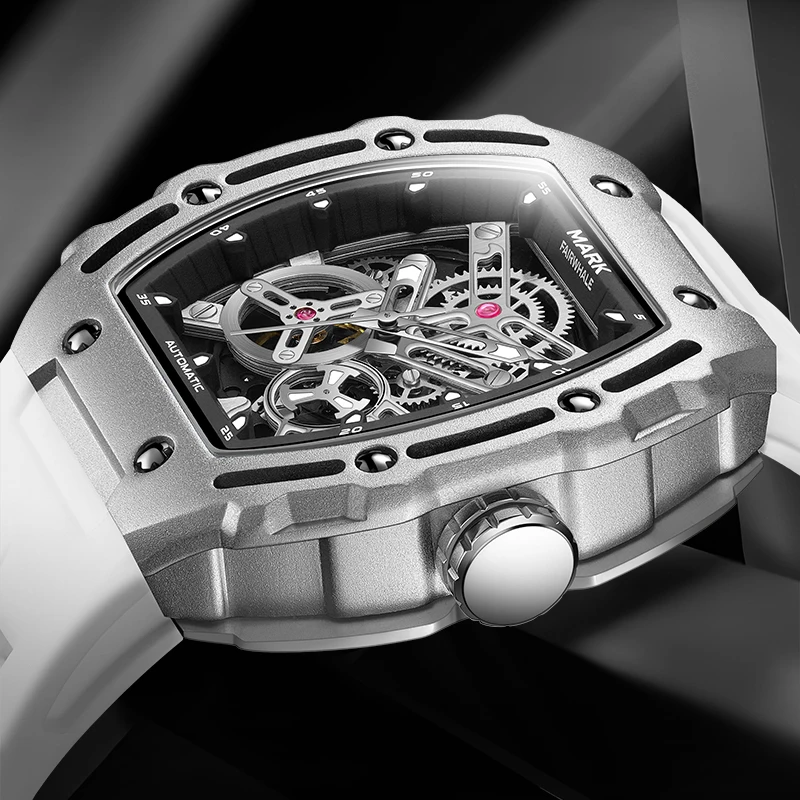
Caring for Your Transparent Timepiece: Practical Considerations
Owning a watch with exposed mechanical components introduces specific care considerations beyond those of conventional timepieces. Understanding these practical aspects helps ensure your transparent watch remains both beautiful and functional for years to come.
Skeleton watches, with their extensive mechanical exposure, are particularly susceptible to dust accumulation. Even microscopic particles can be visible against the intricate background of gears and bridges, potentially detracting from the watch’s aesthetic appeal. Open heart designs face similar challenges, though limited to the aperture area.
Practical care tips for transparent watches include:
- Store your watch in a dust-free environment when not in use
- Consider a watch winder for automatic models to keep the movement active
- Avoid exposing transparent watches to environments with airborne particles
- Clean the exterior crystal regularly using appropriate watch cleaning solutions
- Have your timepiece professionally serviced according to manufacturer recommendations
The increased visibility of transparent watches means that any service needs become more apparent. While conventional watches might conceal minor issues beneath their solid dials, skeleton and open heart designs put any mechanical irregularities on full display.
Professional servicing is particularly important for transparent watches. Standard service intervals typically range from 3-5 years, though this may vary depending on the specific movement and wearing habits. During servicing, watchmakers can clean, lubricate, and adjust the visible components to ensure both optimal function and appearance.
Understanding how long automatic watches last with proper care helps put these maintenance considerations into perspective, ensuring your investment continues to bring both timekeeping accuracy and visual pleasure.
The Evolution of Transparency: Modern Interpretations of Classic Designs
Today’s transparent watches build upon traditional concepts while incorporating contemporary materials, manufacturing techniques, and design sensibilities. This evolution has expanded the aesthetic possibilities of both skeleton and open heart styles while preserving their fundamental appeal.
Modern materials have significantly influenced transparent watch designs. Advanced ceramics, carbon composites, and colored PVD coatings now complement traditional metals, creating striking contrasts that highlight mechanical components. These materials allow for more creative expression while often improving durability and wear resistance.
Contemporary manufacturing techniques, particularly precision CNC machining and laser cutting, have enabled more intricate skeletonization patterns that would have been impossible to create by hand. These technologies allow designers to push the boundaries of what’s structurally possible while maintaining necessary strength and reliability.
Many brands now combine traditional transparent elements with modern design languages:
- Architectural approaches that treat movement bridges as structural sculptures
- Industrial-inspired aesthetics that celebrate mechanical engineering
- Minimalist interpretations that strip away everything non-essential
- Avant-garde designs that challenge conventional watchmaking norms
Despite these innovations, both skeleton and open heart watches maintain their distinct characteristics and philosophical approaches to transparency. Skeleton designs continue to embody comprehensive revelation, while open heart watches preserve their selective glimpse aesthetic, each evolving while remaining true to their essential nature.
The broader timeline of diving watch innovations provides context for understanding how these transparent designs fit within the overall evolution of watch aesthetics, showing how watchmaking traditions continuously adapt to contemporary tastes while honoring their historical roots.
At Sharp Aspect, we celebrate this marriage of tradition and innovation, offering timepieces that showcase the best of mechanical watchmaking artistry while meeting the needs of today’s discerning enthusiasts.

